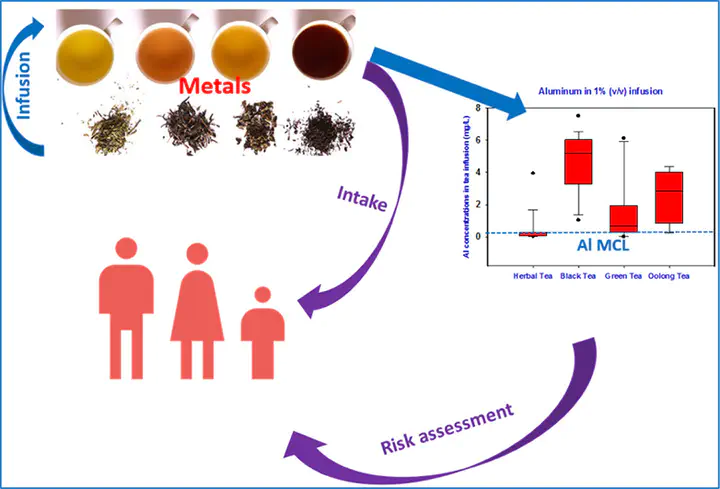Metal concentrations in traditional and herbal teas and their potential risks to human health

Abstract
Food and beverage consumption is an important route for human exposure to metals. Traditional tea (Camellia sinensis) is a widely-consumed beverage, which may contain toxic metals. This study determined total and infusion concentrations of 5 metals including Al, As, Cd, Cr, and Pb in 47 traditional and herbal teas from 13 countries and assessed their potential risks to human health. The data showed that herbal teas exhibited higher As (0.26 mg kg−1), Cd (0.19 mg kg−1) and Pb (2.32 mg kg−1) than traditional teas. Black tea from India had high Cr at 31 mg kg−1 while white tea from China had low Cr at 0.39 mg kg−1. Arsenic, Cd and Pb did not exceed the WHO limit for medicinal plants excluding one herbal tea with 1.1 mg kg−1 As and 26.4 mg kg−1 Pb. However, Cr in 47% herbal teas and 73% traditional teas exceeded the Canada limit of 2 mg kg−1. Metal concentrations in tea infusions were below the MCL for drinking water except for Al. Total Al and its infusion was lower in herbal teas (47–1745 mg kg−1 and 0.09–3.95 mg L−1) than traditional teas (50.3–2517 mg kg−1 and 0.02–7.51 mg L−1), with 0.9–22% and 4–49% of the Al being soluble in infusion. The Al concentrations in infusion in all black tea and 83, 75 and 25% of the green, oolong and herbal teas exceeded the secondary MCL for drinking water at 0.2 mg L−1. However, the weekly intake of Al from drinking tea (0.001–0.39 and 0.003–0.56 mg kg−1 for children and adults) was lower than the provisional tolerable weekly intake for Al at 1.0 mg kg−1. Our data showed that it is important to consider metal intake from tea consumptions, especially for Cr and Al in heavy tea drinkers.